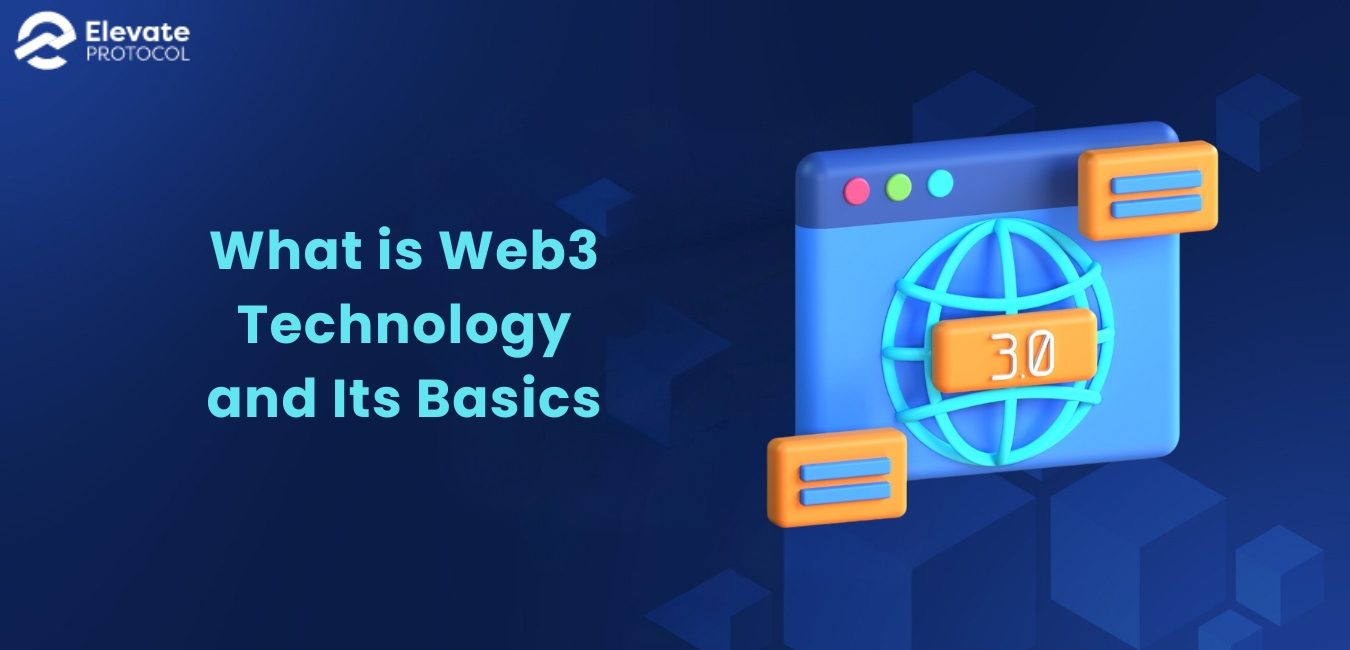
In recent years, the digital landscape has witnessed a significant transformation with the advent of Web3 technology. This revolutionary concept is reshaping with a more decentralized, secure, and user-centric online experience.
As a leading technology company, Elevate Protocol is revolutionizing the way assets are managed on the blockchain. In this blog post, we will solve the complexities of Web3 technology, exploring its basics and understanding its essence.
Understanding the Evolution: From Web1 to Web3
To comprehend the essence of Web3 technology, it’s crucial to trace back the roots of the Internet. The concept of Web1, often referred to as the “read-only” web, emerged during the early days of the World Wide Web.
It primarily involved static web pages where users could consume information but had limited capabilities to contribute or interact. With the evolution of Web2, the Internet transformed into a dynamic, interactive platform.
Social media, collaborative content creation, and user-generated data became the norm. However, this era also witnessed the concentration of power in the hands of a few tech giants, raising concerns about privacy, data ownership, and centralization.
Now, Web3 is heralded as the next phase in the internet’s evolution. Unlike its predecessors, Web3 aims to create a more decentralized, user-centric Internet where individuals have greater control over their data and digital interactions.
Decoding Web3 Technology
1. Blockchain Technology
At the core of Web3 technology lies blockchain, a decentralized and distributed ledger technology. Blockchain ensures transparency, security, and immutability of data by recording transactions across a network of computers.
This technology eliminates the need for intermediaries, fostering trust in online interactions. Smart contracts, self-executing contracts with the terms of the agreement directly written into code, play a key role in Web3.
These contracts automate processes, providing a trustless and efficient way to execute agreements without the need for intermediaries.
2. Decentralized Identity (DID)
Web3 emphasizes the importance of decentralized identity, allowing users to have control over their digital identities. Decentralized Identity systems leverage blockchain technology to provide users with secure and digital identities. This enhances privacy & also reduces the risk of unauthorized access.
3. Tokenization
Web3 introduces the concept of tokenization, transforming physical and digital assets into tokens on a blockchain. These tokens can represent ownership, value, or rights, enabling a more seamless exchange of assets. Tokenization has the potential to revolutionize various industries.
4. Interoperability
Interoperability is a key feature of Web3, allowing different blockchain networks and decentralized applications (DApps) to seamlessly communicate with each other.
This interconnectedness enhances the overall functionality of the internet, enabling users to experience a more cohesive and integrated digital environment.
5. User Empowerment
One of the fundamental principles of Web3 is the empowerment of users regarding their data. In Web3, individuals have greater control over how their data is used and shared.
This shift from centralized data control to user-centric data ownership addresses privacy concerns that have been prevalent in the Web2 era.
The Implications of Web3 Technology
1. Data Privacy and Security
Web3 technology is set to redefine the landscape of data privacy and security. With decentralized identity and blockchain encryption.
The risks associated with centralized data storage are mitigated. Users can have confidence that their personal information is secure and accessible only to those they authorize.
2. Financial Inclusion and Innovation
The tokenization of assets and the use of blockchain in financial systems have the potential to revolutionize the way we conduct financial transactions.
Web3 promotes financial inclusion by providing access to banking services for the unbanked and underserved populations, opening up new opportunities for innovation in the fintech sector.
3. Censorship Resistance
Web3’s decentralized nature makes it more resistant to censorship. In traditional Web2 platforms, content can be restricted or removed based on the policies of a central authority.
With Web3, content is distributed across a network of nodes, making it more challenging to control or censor information.
4. Creator Economy
The rise of decentralized applications (DApps) on Web3 platforms has given birth to the creator economy. Content creators, artists, and developers can monetize their work directly.
Without relying on intermediaries that often take a significant portion of their earnings. This fosters a more direct and equitable relationship between creators and their audience.
Challenges
While the potential of Web3 technology is vast, it’s essential to acknowledge the challenges that lie ahead. Scalability, user adoption, and regulatory uncertainties are among the hurdles that must be addressed for Web3 to realize its full potential.
Moreover, educating users about the benefits and intricacies of Web3 will be crucial in fostering widespread adoption.
Conclusion
Web3 technology represents a paradigm shift in the way we engage with the digital world. Its foundations in blockchain, decentralized identity, tokenization, and interoperability promise a more inclusive, secure, and user-centric internet.
As we navigate the evolving landscape of Web3, it is evident that the future of the Internet will be shaped by the principles of decentralization, individual empowerment, and enhanced privacy.
Read More: Elevate Protocol Review: Benefits, Features and More